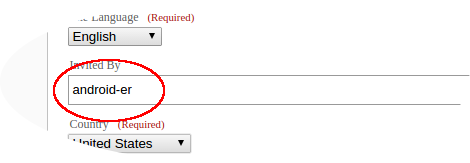But FAIL - As shown in the video, sometimes the download will fail. And once fail, the code will block and have to be re-start. Hope anybody can advise.
Modify MainActivity.java
package com.example.androidhttpservice;
import java.io.File;
import java.io.IOException;
import java.io.OutputStream;
import java.io.OutputStreamWriter;
import java.net.InetAddress;
import java.net.NetworkInterface;
import java.net.ServerSocket;
import java.net.Socket;
import java.net.SocketException;
import java.util.Enumeration;
import org.apache.http.HttpEntity;
import org.apache.http.HttpException;
import org.apache.http.HttpRequest;
import org.apache.http.HttpResponse;
import org.apache.http.entity.ContentProducer;
import org.apache.http.entity.EntityTemplate;
import org.apache.http.entity.FileEntity;
import org.apache.http.impl.DefaultConnectionReuseStrategy;
import org.apache.http.impl.DefaultHttpResponseFactory;
import org.apache.http.impl.DefaultHttpServerConnection;
import org.apache.http.params.BasicHttpParams;
import org.apache.http.protocol.BasicHttpContext;
import org.apache.http.protocol.BasicHttpProcessor;
import org.apache.http.protocol.HttpContext;
import org.apache.http.protocol.HttpRequestHandler;
import org.apache.http.protocol.HttpRequestHandlerRegistry;
import org.apache.http.protocol.HttpService;
import org.apache.http.protocol.ResponseConnControl;
import org.apache.http.protocol.ResponseContent;
import org.apache.http.protocol.ResponseDate;
import org.apache.http.protocol.ResponseServer;
import android.support.v7.app.ActionBarActivity;
import android.widget.TextView;
import android.os.Bundle;
import android.os.Environment;
/*
* Permission needed:
* "android.permission.INTERNET"
* "android.permission.READ_EXTERNAL_STORAGE"
*/
public class MainActivity extends ActionBarActivity {
HttpServiceThread httpServiceThread;
TextView infoIp;
@Override
protected void onCreate(Bundle savedInstanceState) {
super.onCreate(savedInstanceState);
setContentView(R.layout.activity_main);
infoIp = (TextView) findViewById(R.id.infoip);
infoIp.setText(getIpAddress() + ":"
+ HttpServiceThread.HttpServerPORT + "\n");
httpServiceThread = new HttpServiceThread();
httpServiceThread.start();
}
@Override
protected void onDestroy() {
super.onDestroy();
httpServiceThread.stopServer();
}
private String getIpAddress() {
String ip = "";
try {
Enumeration<NetworkInterface> enumNetworkInterfaces = NetworkInterface
.getNetworkInterfaces();
while (enumNetworkInterfaces.hasMoreElements()) {
NetworkInterface networkInterface = enumNetworkInterfaces
.nextElement();
Enumeration<InetAddress> enumInetAddress = networkInterface
.getInetAddresses();
while (enumInetAddress.hasMoreElements()) {
InetAddress inetAddress = enumInetAddress.nextElement();
if (inetAddress.isSiteLocalAddress()) {
ip += "SiteLocalAddress: "
+ inetAddress.getHostAddress() + "\n";
}
}
}
} catch (SocketException e) {
// TODO Auto-generated catch block
e.printStackTrace();
ip += "Something Wrong! " + e.toString() + "\n";
}
return ip;
}
private class HttpServiceThread extends Thread {
ServerSocket serverSocket;
Socket socket;
HttpService httpService;
BasicHttpContext basicHttpContext;
static final int HttpServerPORT = 8080;
boolean RUNNING = false;
HttpServiceThread() {
RUNNING = true;
startHttpService();
}
@Override
public void run() {
try {
serverSocket = new ServerSocket(HttpServerPORT);
serverSocket.setReuseAddress(true);
while (RUNNING) {
socket = serverSocket.accept();
DefaultHttpServerConnection httpServerConnection = new DefaultHttpServerConnection();
httpServerConnection.bind(socket, new BasicHttpParams());
httpService.handleRequest(httpServerConnection,
basicHttpContext);
httpServerConnection.shutdown();
}
serverSocket.close();
} catch (IOException e) {
// TODO Auto-generated catch block
e.printStackTrace();
} catch (HttpException e) {
// TODO Auto-generated catch block
e.printStackTrace();
}
}
private synchronized void startHttpService() {
BasicHttpProcessor basicHttpProcessor = new BasicHttpProcessor();
basicHttpContext = new BasicHttpContext();
basicHttpProcessor.addInterceptor(new ResponseDate());
basicHttpProcessor.addInterceptor(new ResponseServer());
basicHttpProcessor.addInterceptor(new ResponseContent());
basicHttpProcessor.addInterceptor(new ResponseConnControl());
httpService = new HttpService(basicHttpProcessor,
new DefaultConnectionReuseStrategy(),
new DefaultHttpResponseFactory());
HttpRequestHandlerRegistry registry = new HttpRequestHandlerRegistry();
registry.register("/", new HomeCommandHandler());
registry.register("/image", new ImageCommandHandler());
httpService.setHandlerResolver(registry);
}
public synchronized void stopServer() {
RUNNING = false;
if (serverSocket != null) {
try {
serverSocket.close();
} catch (IOException e) {
// TODO Auto-generated catch block
e.printStackTrace();
}
}
}
class HomeCommandHandler implements HttpRequestHandler {
@Override
public void handle(HttpRequest request, HttpResponse response,
HttpContext httpContext) throws HttpException, IOException {
HttpEntity httpEntity = new EntityTemplate(
new ContentProducer() {
public void writeTo(final OutputStream outstream)
throws IOException {
OutputStreamWriter outputStreamWriter = new OutputStreamWriter(
outstream, "UTF-8");
String response = "<html><head></head><body><h1>Hello HttpService, from Android-er<h1></body></html>";
outputStreamWriter.write(response);
outputStreamWriter.flush();
}
});
response.setHeader("Content-Type", "text/html");
response.setEntity(httpEntity);
}
}
class ImageCommandHandler implements HttpRequestHandler {
@Override
public void handle(HttpRequest request, HttpResponse response,
HttpContext context) throws HttpException, IOException {
File file = new File(
Environment.getExternalStorageDirectory(),
"android-er_sketch.jpg");
FileEntity fileEntity = new FileEntity(file, "image/jpg");
response.setHeader("Content-Type", "application/force-download");
response.setHeader("Content-Disposition","attachment; filename=image.jpg");
response.setHeader("Content-Type", "image/jpg");
response.setEntity(fileEntity);
}
}
}
}
Layout file, activity_main.xml, refer to last post.
Permission of "android.permission.INTERNET" and "android.permission.READ_EXTERNAL_STORAGE" is needed in AndroidManifest.xml.
















